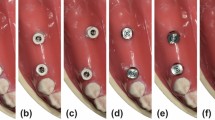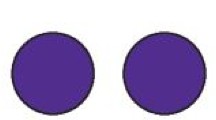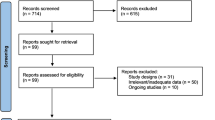Abstract
Design The study was a randomised clinical trial comparing two independent groups for implant placement. One group was a computer-aided design/computer-aided manufacturing (CAD/CAM) implant guide (digital) and the other one used the traditional implant guide (traditional impression).
Aim The study aimed to compare the outcomes of two different methods of guidance for surgical implants for missing first molars. One was prepared by intraoral digital scanning. The other was the conventional impression, which includes time to make an impression and perform surgery, fit of intraoral guide and deviation in screw access channels position. The purpose of the study was not only to find the most suitable implant guide but also to allow dentists to justify their chosen method.
Methods The authors of this study included 42 participants with first molars missing and distributed them into two groups, one group using a digital production guide and the other using a traditional impression. The evaluation measured the deviation length and direction of the screw access channel position relative to implant alignments. In addition, labour time for implant guides and the intraoral fit were assessed as secondary outcomes.
Results The impression time and implant surgery time for patients in the digital group were shorter than for those in the traditional group. The intraoral first fit of the guide was better for patients who underwent treatment with a digital system than it was for control patients (p <0.05). The one-time satisfaction rate of the digital group was 100%, while five cases in the control group required repetition. The difference between screw access channel positions on the left and right sides for both groups showed no significant differences.
Conclusions The digital surgical guide for a first molar implant reduces the clinical, operative time and screw access deviation and therefore improves efficiency. Improved clinical outcomes indicated that there is evidence to support the use of CAD/CAM guides in dental implant placement for a single missing tooth replacement.
This is a preview of subscription content, access via your institution
Access options
Subscribe to this journal
Receive 4 print issues and online access
$259.00 per year
only $64.75 per issue
Buy this article
- Purchase on Springer Link
- Instant access to full article PDF
Prices may be subject to local taxes which are calculated during checkout
Similar content being viewed by others
References
Dentistry Today. A Fully Digital Approach Manages Immediate Contiguous Implants in the Aesthetic Zone from Surgery to Rehabilitation. 2021. Available at https://www.dentistrytoday.com/a-fully-digital-approach-manages-immediate-contiguous-implants-in-the-aesthetic-zone-from-surgery-to-rehabilitation/ (accessed April 2022).
Yang Y, Hu C, Zhang Y, Wang L, Shao L, You J. Comparing digital and traditional guides in first molar implant surgery: A randomized clinical trial. Technol Health Care 2022; 30: 403-412.
Smith R B, Tarnow D P. Classification of molar extraction sites for immediate dental implant placement: technical note. Int J Oral Maxillofac Implants 2013; 28: 911-916.
Author information
Authors and Affiliations
Ethics declarations
The authors declare no conflicts of interest.
Rights and permissions
About this article
Cite this article
de Almeida Barros Mourão, C., Machado, A. & Casado, P. Is a digital surgical guide superior for implant placement in the first molars areas?. Evid Based Dent 23, 58–59 (2022). https://doi.org/10.1038/s41432-022-0260-0
Received:
Accepted:
Published:
Issue Date:
DOI: https://doi.org/10.1038/s41432-022-0260-0
This article is cited by
-
Is the implant-retained overdenture a solution to improve the patient quality of life?
Evidence-Based Dentistry (2022)



